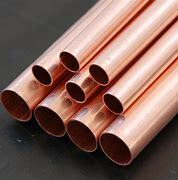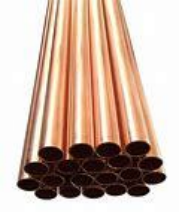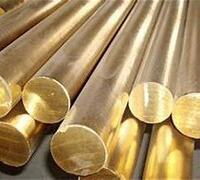1. Introduction
Just 24 hours ago, global copper prices surged past $9,200 per metric ton amid supply chain disruptions in Chile and rising demand from renewable energy infrastructure projects (source: Bloomberg, May 22, 2024). This spike has reignited interest in copper-based components like the copper rod—not just as a commodity, but as a critical engineering material with specialized variants for distinct applications.

Whether you’re grounding an electrical system, brazing copper pipes, or sourcing materials for scrap recycling, understanding the nuances between rod copper types can save time, money, and safety risks. In this deep dive, we’ll compare copper earth rod, copper brazing rod, and copper welding rod—and clarify how they differ from related products like copper strip and copper round bar.
2. Copper Rod Variants: Purpose-Driven Design
2.1. Earthing and Grounding Rods: Safety First
When it comes to electrical safety, the copper earth rod (also called earthing rod copper or ground rod copper) is non-negotiable. These rods channel fault currents safely into the earth. But not all are created equal.
Pure copper rods offer excellent conductivity and corrosion resistance but are expensive. That’s why many opt for copper bonded earthing rods—steel cores electroplated with a thick layer of copper. Similarly, copper clad steel ground rods (or copper clad earth rods) use a metallurgical bond to fuse copper to steel, offering a balance of strength and conductivity.
- Copper bonded steel provides tensile strength while maintaining 90%+ of pure copper’s conductivity.
- Pure copper rods last longer in corrosive soils but cost significantly more—earthing rod price for pure copper can be 2–3× that of bonded alternatives.
- For most residential and light commercial uses, copper bonded or copper clad steel earth rods are the standard due to cost-effectiveness and durability.
2.2. Welding and Brazing Rods: Joining Copper to Copper

For joining copper components—like in HVAC or plumbing—the right filler rod is essential. Here, terms like copper brazing rod, copper to copper brazing rods, and copper welding rod often cause confusion.
True copper welding rod (used in arc or TIG welding) is rare because pure copper’s high thermal conductivity makes fusion difficult without preheating. Instead, most technicians use phosphorus-deoxidized copper alloys (like CuP6) for copper rod welding on aircon copper pipe or copper tubing.
Brazing, however, is far more common. Copper to copper welding rod isn’t technically accurate—brazing rods (e.g., BCuP series) melt at lower temps and flow into joints via capillary action. These are ideal for copper pipe soldering and resoldering copper pipe without disassembly.
- Copper brazing rods work best with flux and torch heating.
- For copper rod for welding in high-stress applications, silicon bronze or beryllium copper rods may be preferred over pure copper.
- Always match the rod alloy to the base metal—using a generic welding rod copper can lead to weak, porous joints.
3. Beyond Rods: Copper Strip and Bar in Context
While rod copper serves linear applications, flat conductors like copper strip play vital roles in grounding, busbars, and EMI shielding. Products like flat copper strip, beryllium copper strip, and nickel plated copper strip each serve niche functions.
For instance, copper strip for earthing (e.g., 25x3mm) is commonly used in substation grounding grids. Meanwhile, thin copper strips or 1mm copper strip rolls are popular in electronics. The copper strip price varies widely based on thickness, alloy, and finish—beryllium copper strip commands a premium for its spring properties.

Scrap recyclers often seek the best way to strip copper wire to recover clean copper strip or wire. Burning copper wire for scrap is illegal in many regions and damages the metal. Instead, mechanical strippers offer the fast way to strip copper wire while preserving value—especially for stripping wire for recycling or stripping copper wire for scrap.
4. Copper Pipe vs. Rod: Don’t Confuse the Two
It’s easy to mix up copper rod with copper pipe tube—especially since both appear in HVAC and plumbing. Air conditioning copper pipe (or aircon copper tube) comes in standard sizes like 15mm copper pipe or 22mm copper tube and is used for refrigerant lines.
Unlike solid copper rod, copper tubing is hollow and sized by outer diameter. Soldering copper tube requires compatible copper pipe fittings and proper cleaning. While copper rod welding joins solid stock, copper pipe soldering relies on capillary joints and flux.
Note: PEX plumbing pipes are increasingly replacing copper in water lines, but copper remains dominant in AC systems due to its thermal performance and compatibility with refrigerants.
5. Market Considerations: Price and Availability
With copper prices volatile, buyers often ask: copper rod price vs. copper bonded? Or copper strip near me vs. online bulk orders? Pure copper round bar (or round bar copper) costs more than copper clad steel but offers superior longevity in harsh environments.
Similarly, copper ingot price affects downstream products—copper bars for sale, flexible copper bus bar, and even copper roof strip all track LME copper benchmarks. For budget-conscious projects, copper bonded ground rods or copper clad steel earth rods offer smart compromises.
6. Conclusion
From earthing rod copper to copper to copper brazing rods, the ‘right’ copper rod depends entirely on your application. Pure copper excels in conductivity and corrosion resistance but at a premium. Copper bonded and copper clad variants deliver strength and value for grounding. Meanwhile, welding and brazing demand alloy-specific rods—not generic copper rod welding supplies.
As copper prices climb and green tech drives demand, knowing these distinctions ensures you select the optimal material—whether you’re installing an earthing system, repairing aircon copper pipe, or stripping copper wire for scrap.
Our Website founded on October 17, 2012, is a high-tech enterprise committed to the research and development, production, processing, sales and technical services of ceramic relative materials such as What’s. Our products includes but not limited to Boron Carbide Ceramic Products, Boron Nitride Ceramic Products, Silicon Carbide Ceramic Products, Silicon Nitride Ceramic Products, Zirconium Dioxide Ceramic Products, etc. If you are interested, please feel free to contact us.

